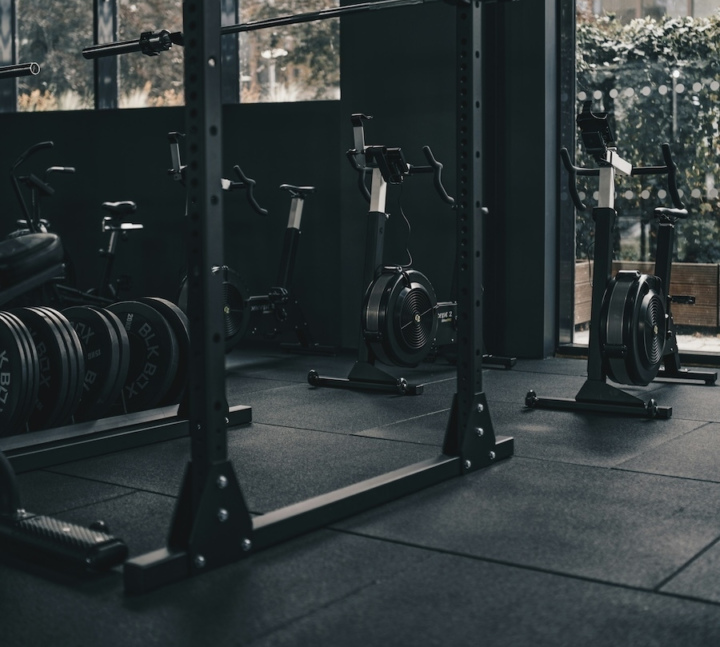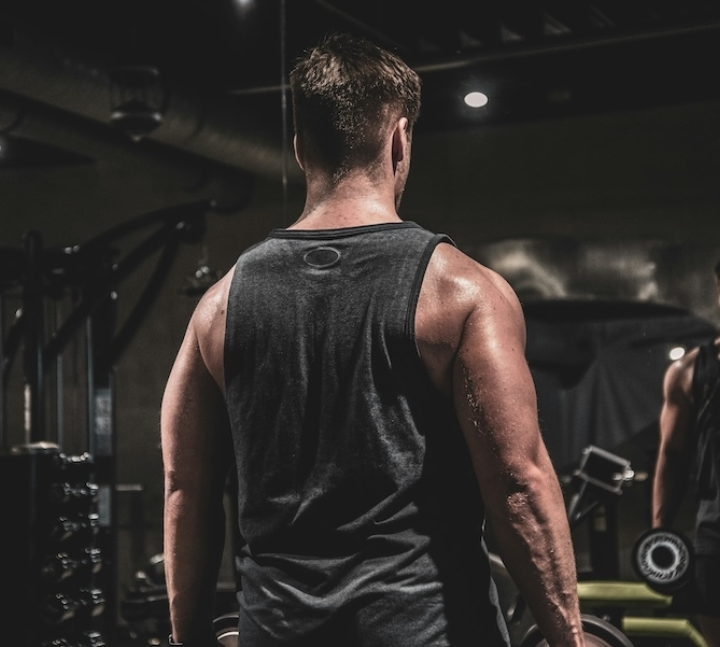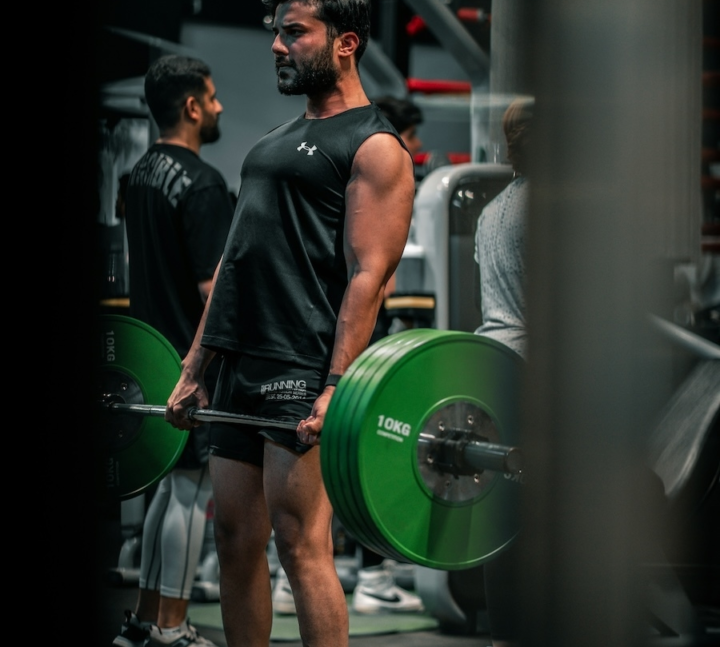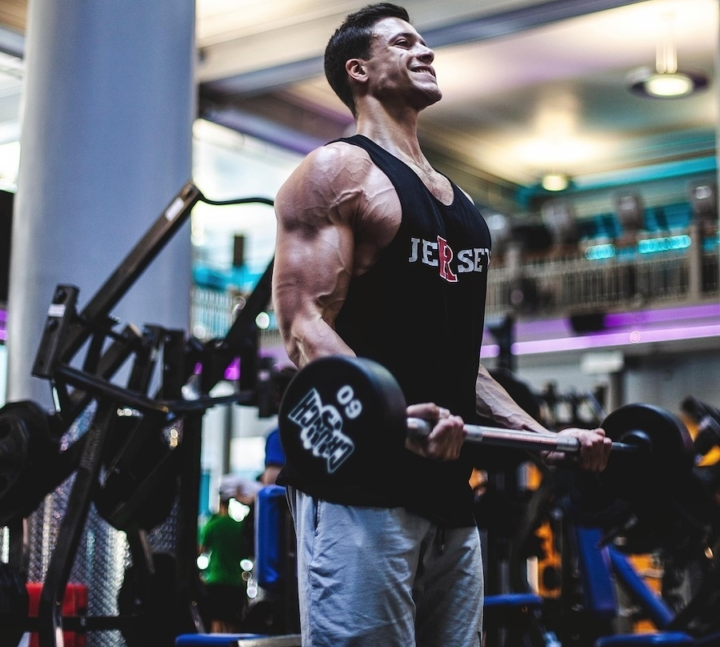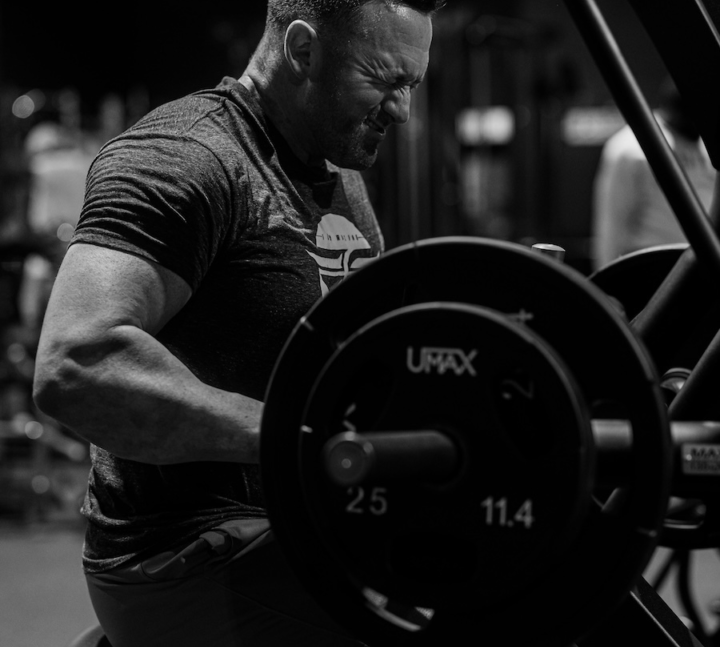Exercise
Seated Dumbell Shoulder Press
How to Perform - Seated Dumbell Shoulder Press
- Sit on a bench with back support, feet flat on the floor, and hold a dumbbell in each hand at shoulder height with palms facing forward.
- Brace your core and maintain a neutral spine with shoulders pulled back and down away from your ears.
- Press the dumbbells upward in a controlled motion until your arms are fully extended overhead, exhaling during the effort.
- Keep your wrists straight and aligned with your forearms throughout the movement.
- Pause briefly at the top of the movement while maintaining shoulder stability and core engagement.
- Lower the weights slowly to the starting position at shoulder level while inhaling, controlling the descent.
- Maintain elbow positioning slightly in front of your body rather than flared out to the sides to protect your shoulder joints.
- Reset your posture and breathing before beginning the next repetition, ensuring your back remains in contact with the bench support.
Important information
- Avoid arching your lower back or pushing your head forward during the pressing motion - this compromises spine alignment and reduces shoulder stability.
- Select a weight that allows you to maintain proper form throughout all repetitions - if you're compensating with body momentum, the weight is too heavy.
- Keep your elbows at approximately 90 degrees at the bottom position to minimize strain on your shoulder joints.
- If you experience any shoulder pain, try rotating your palms to face each other (neutral grip) which can be more comfortable for some individuals.
Primary Muscles
Muscle Groups
Mechanic
Risk Areas
Built for progress
Take the guesswork out of training
Create personalized AI-powered workout plans that evolve with you. Train smarter, track every rep and keep moving forward, one workout at a time.






The Seated Dumbbell Shoulder Press stands as a cornerstone movement in upper body strength development, particularly for those who've moved beyond beginner status in their fitness journey. This intermediate-level exercise primarily targets the anterior (front) and lateral (side) deltoid muscles while engaging the triceps as crucial secondary movers, creating balanced shoulder development that contributes to that coveted V-shaped upper body. When incorporated into a well-designed training program, this press variation offers versatility that serves multiple training philosophies. Bodybuilders prize this movement for its ability to isolate and develop defined shoulder caps with remarkable symmetry.
The seated position allows for stricter form and greater time under tension, facilitating the muscle hypertrophy that stage-ready physiques demand. Meanwhile, powerlifters utilize this assistance exercise to strengthen pressing mechanics and overcome sticking points in their competition lifts. What distinguishes the seated version from its standing counterpart is the enhanced stability. By eliminating lower body involvement, you can focus intensely on progressive overload specific to the shoulder muscles. This makes it particularly effective for developing pure upper body pressing strength without the balance challenges of standing variations.
The seated position also allows for heavier loading with reduced risk of compensatory movement patterns. For those focused primarily on strength development, the seated dumbbell press offers unique advantages. The independent nature of dumbbells requires greater stabilization through the shoulder complex, identifies and addresses strength imbalances between sides, and allows for a more natural range of motion than barbell variations. These benefits translate to improved pressing power, enhanced shoulder joint integrity, and resilience against common upper body injuries. Whether your goals lean toward aesthetic muscular development or raw pressing strength, this exercise delivers impressive results when performed consistently with proper loading strategies appropriate to your experience level and recovery capacity.
FAQ - Seated Dumbell Shoulder Press
The Seated Dumbbell Shoulder Press primarily targets the anterior (front) and lateral (side) deltoids while engaging the triceps as secondary movers. Your upper trapezius, serratus anterior, and core muscles also activate as stabilizers during the movement.
Maintain a neutral spine with your lower back slightly arched and upper back pressed firmly against the bench backrest. Avoid excessive arching or rounding of the spine, as this can place undue stress on your lower back and compromise shoulder mechanics.
To make it easier, use lighter weights or perform partial range of motion reps. For a greater challenge, increase the weight, slow down the eccentric (lowering) phase to 3-4 seconds, or progress to a more difficult variation like the Arnold press that incorporates rotation.
The most common mistakes include rounding your lower back, rotating your hips instead of keeping them square, rushing through the movement, and not hinging properly at the hips. Focus on maintaining a neutral spine, moving with control, and keeping your standing knee slightly soft rather than locked.
For optimal results, incorporate this exercise 1-2 times weekly with at least 48 hours between sessions to allow proper shoulder recovery. If you're specifically training for shoulder hypertrophy, you might perform 3-4 sets of 8-12 reps, while strength goals typically call for 3-5 sets of 4-8 reps with heavier weights.



